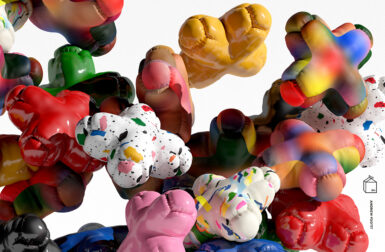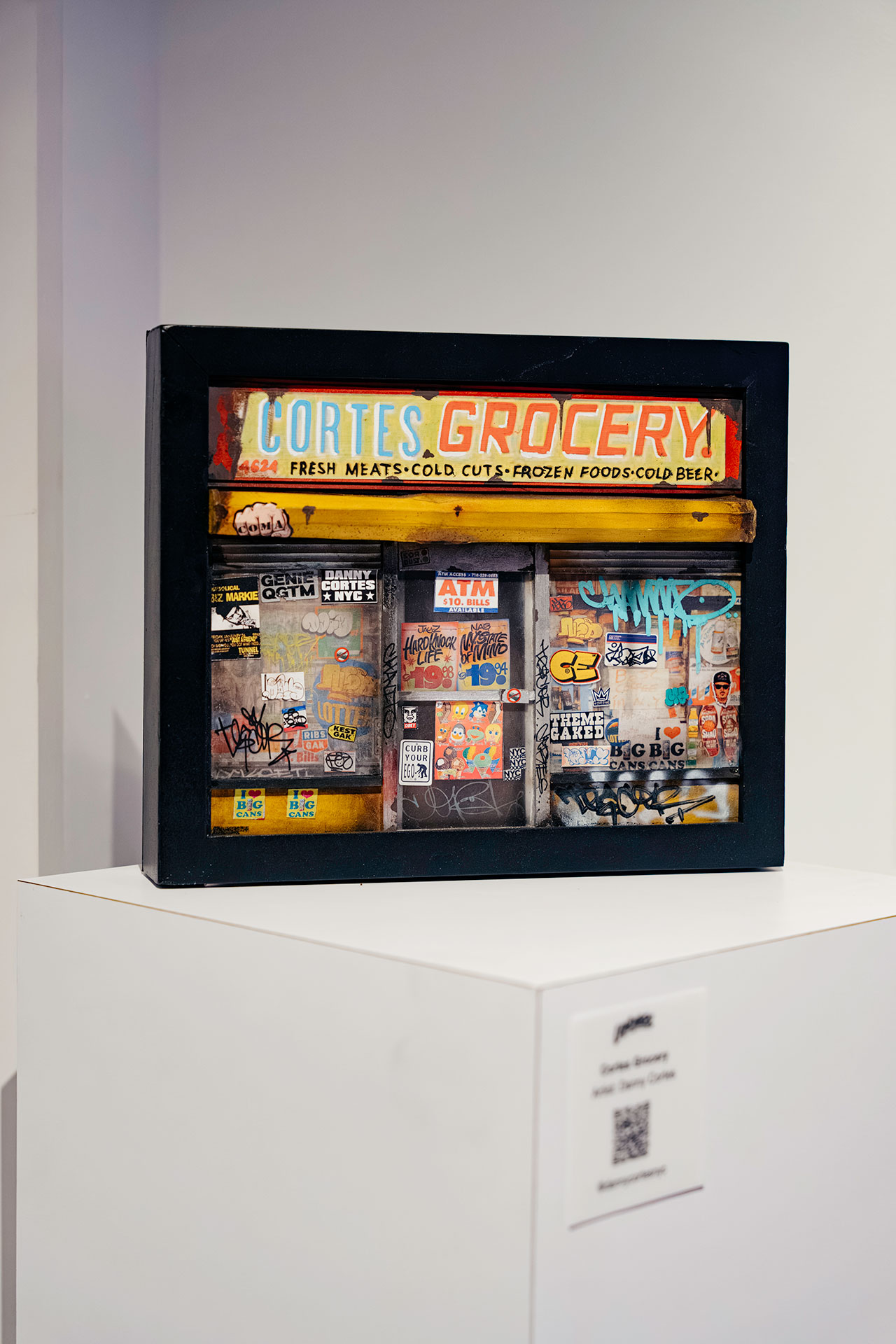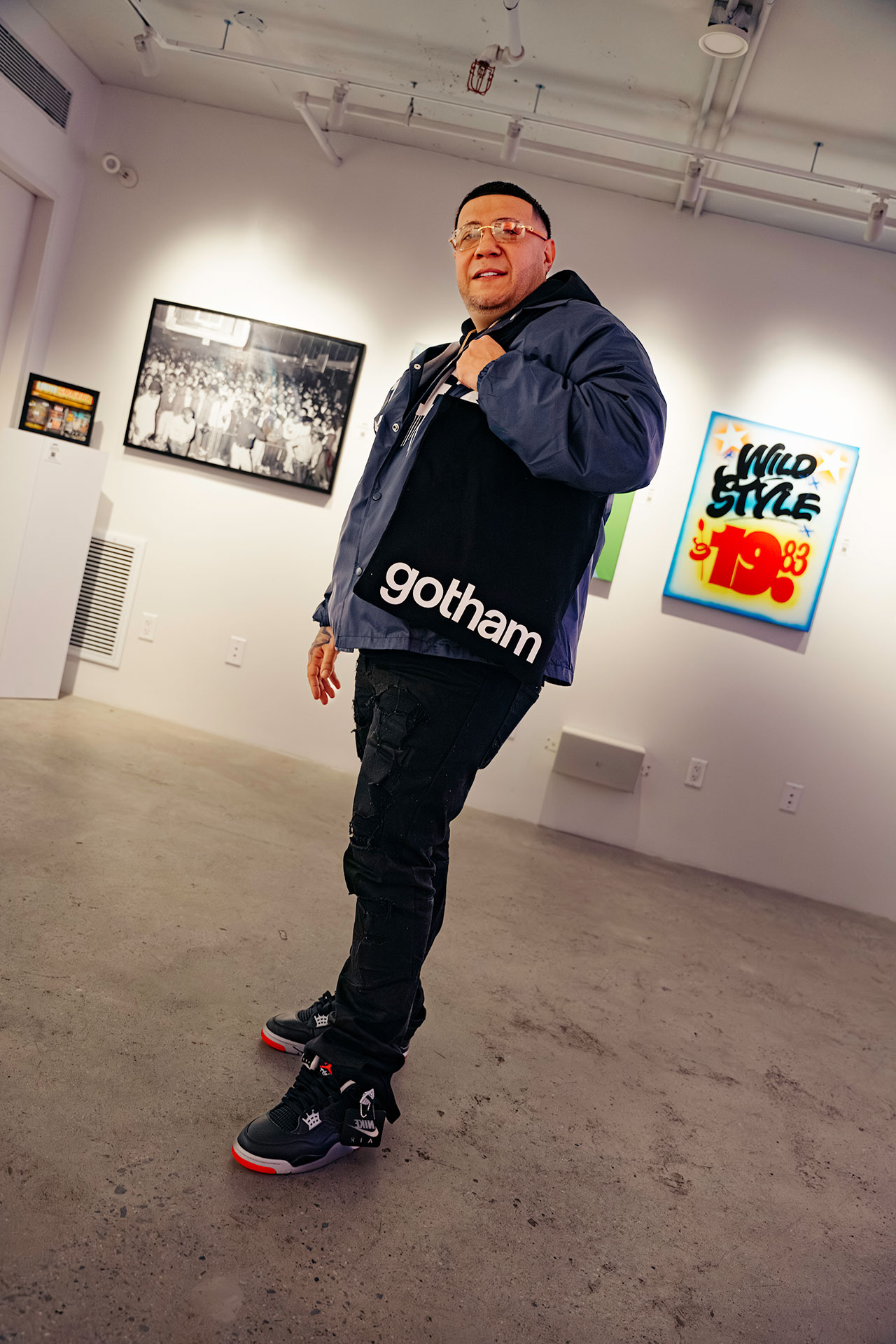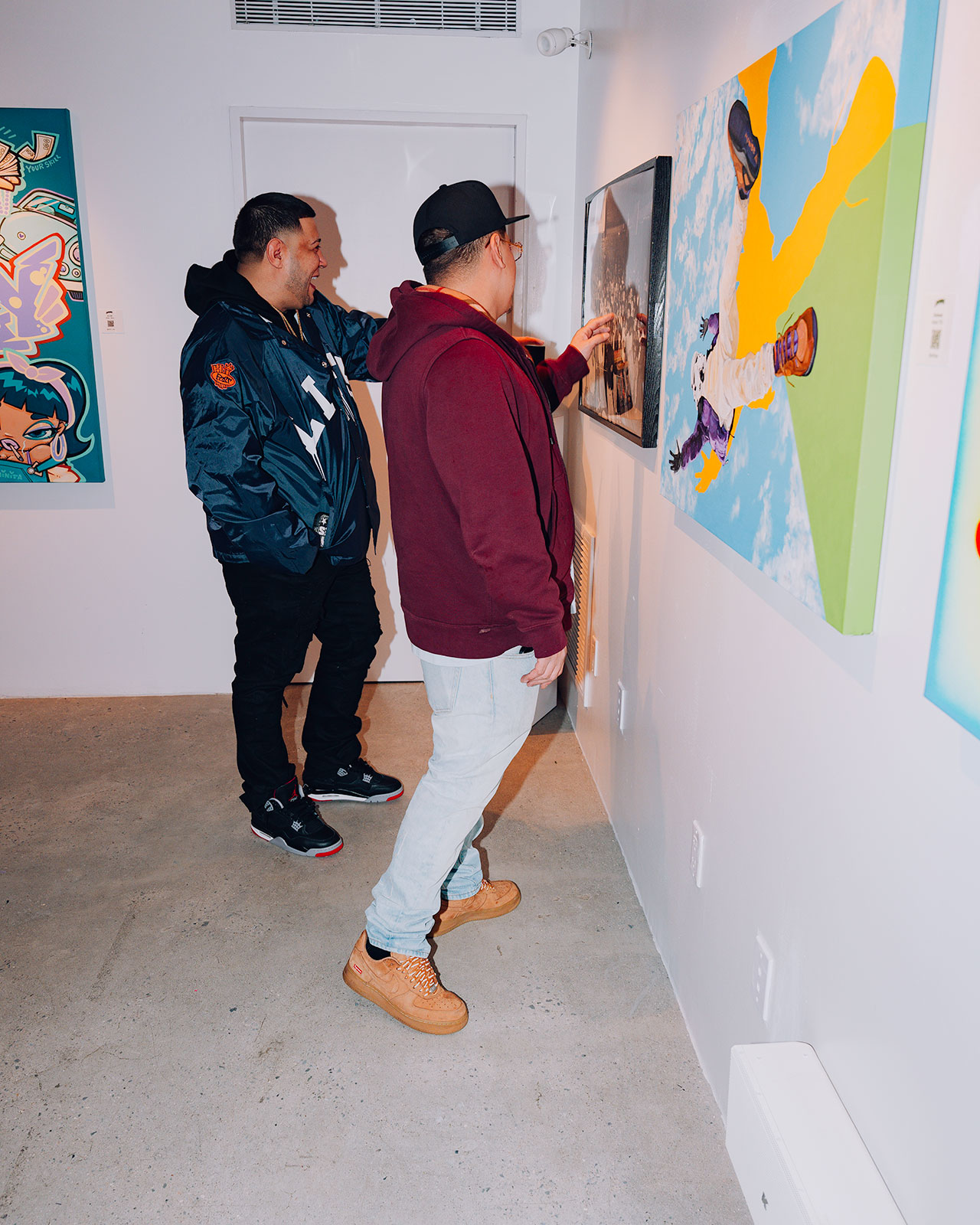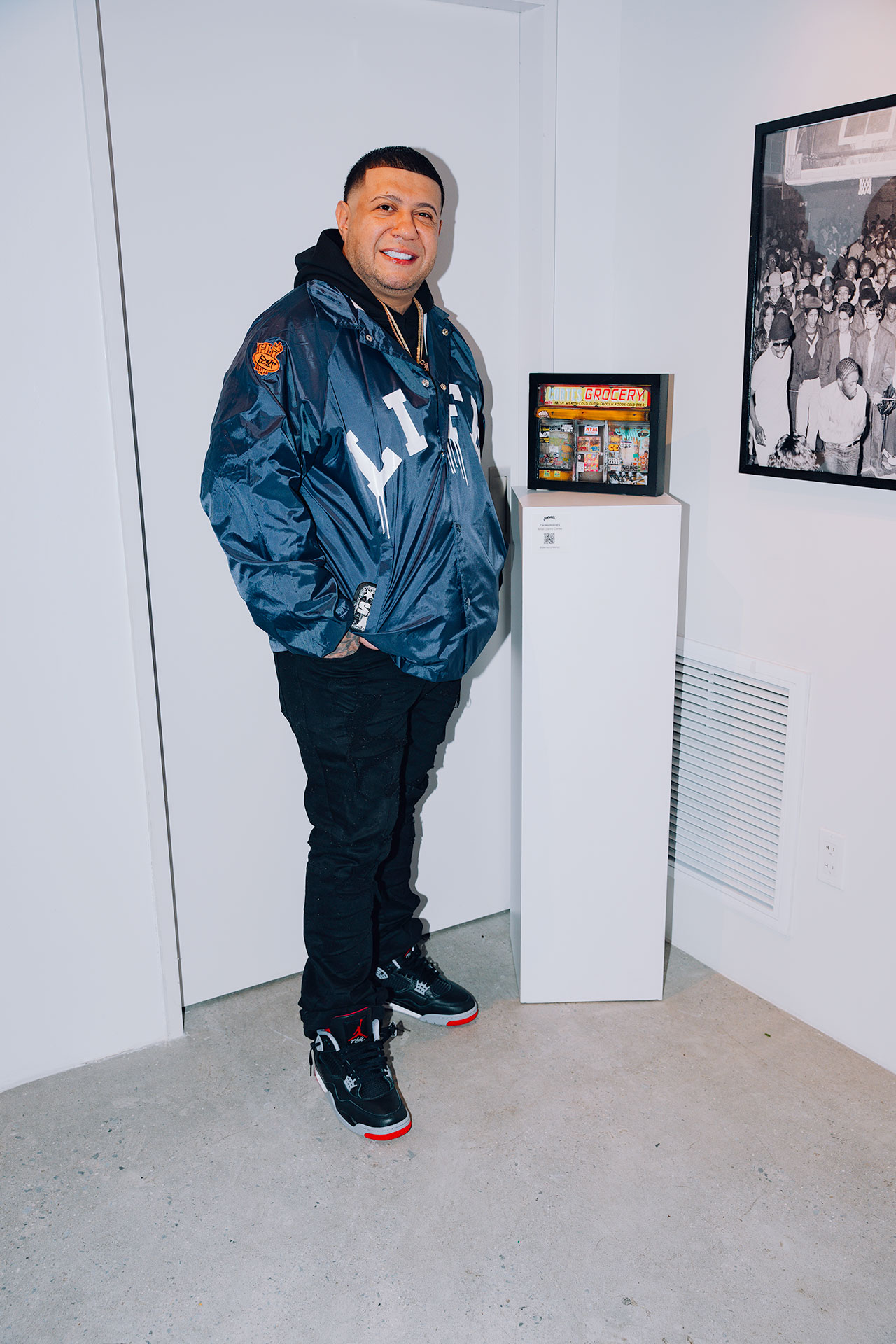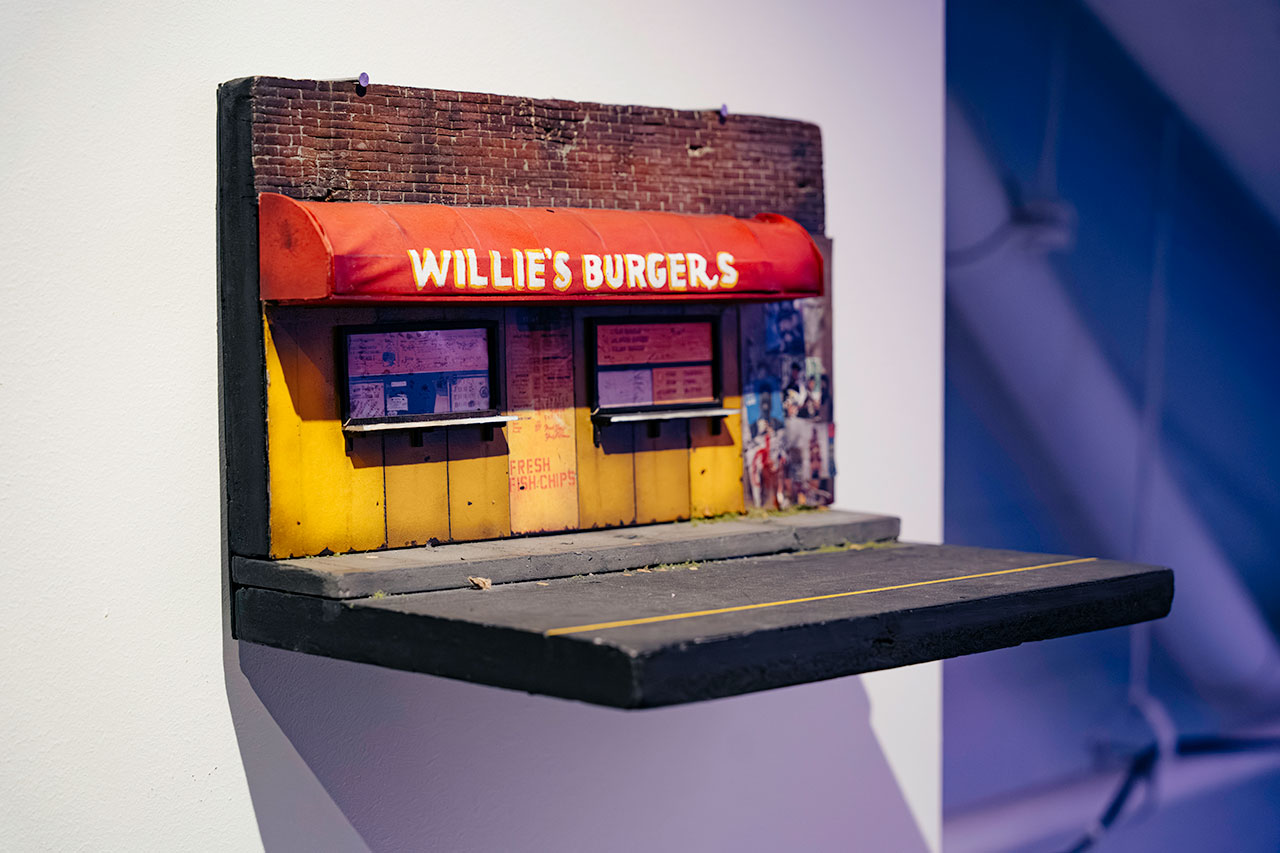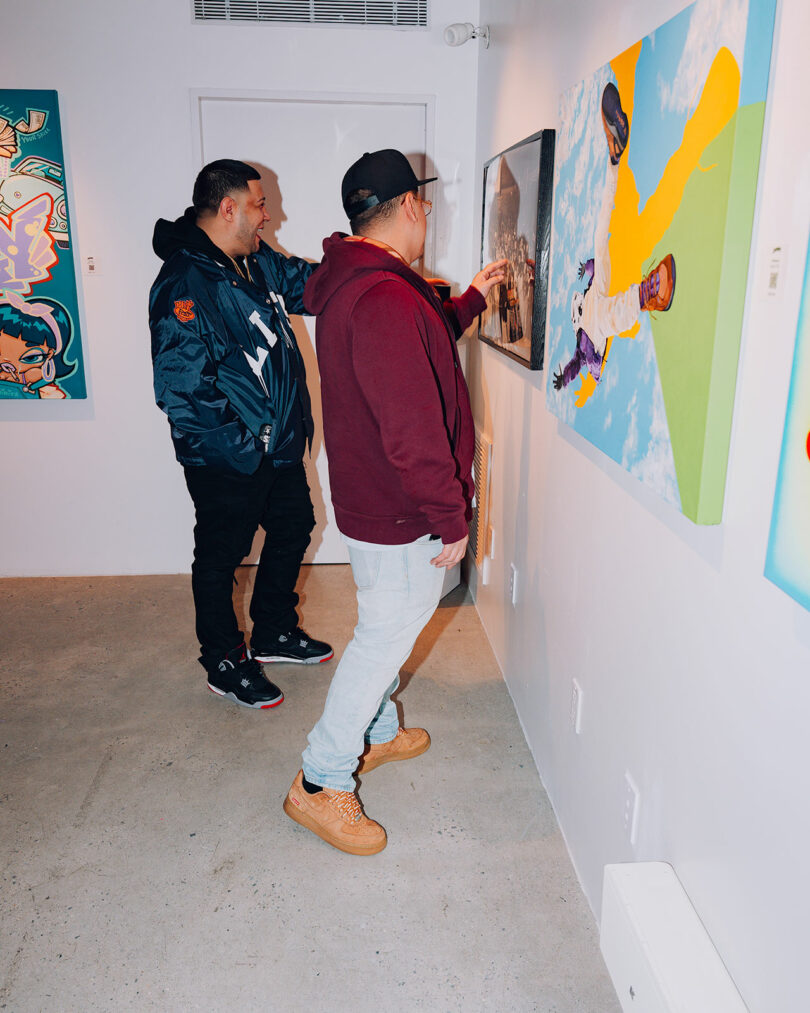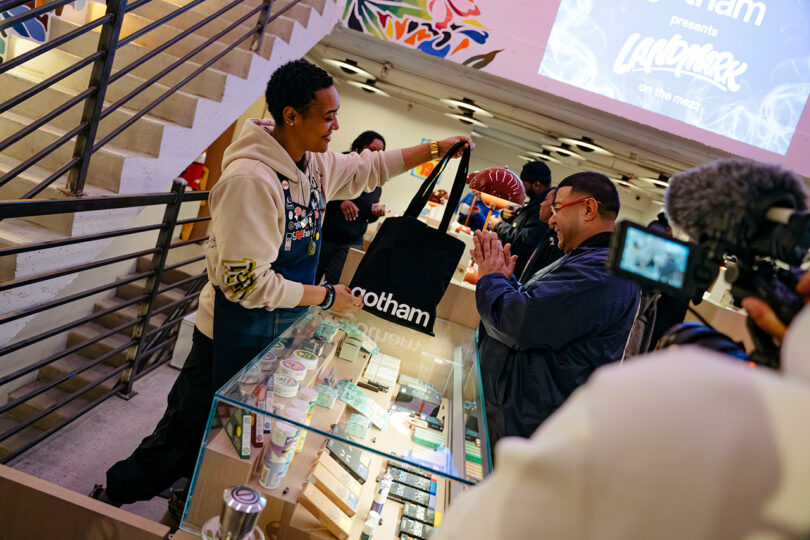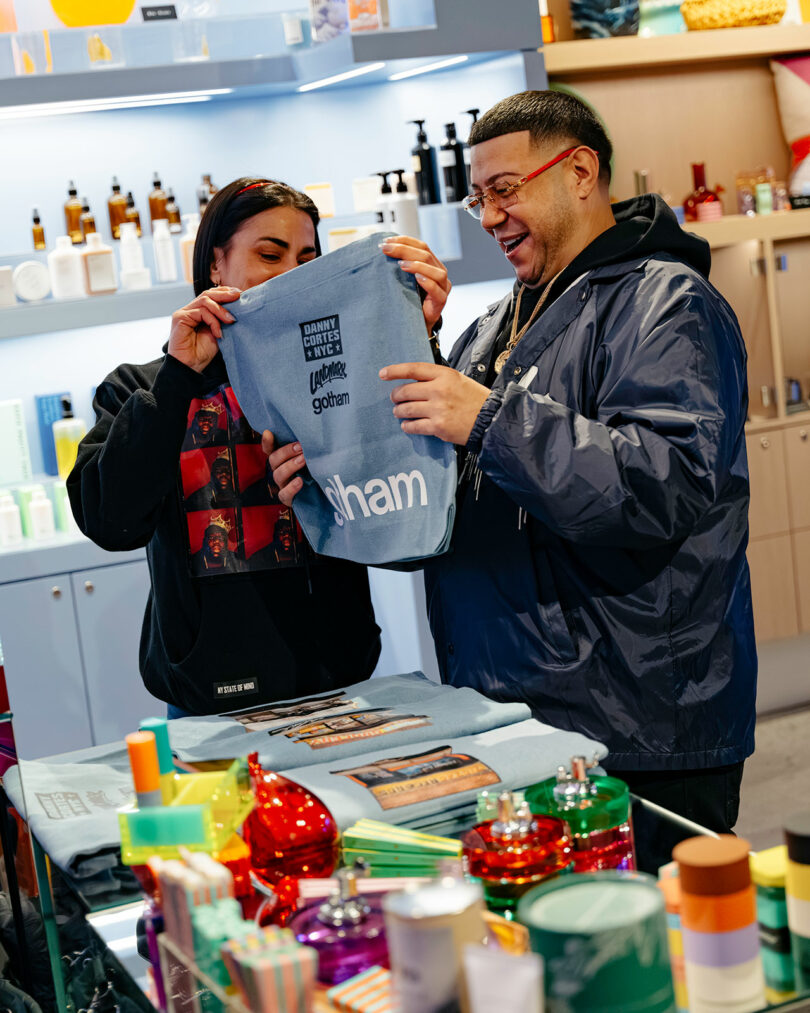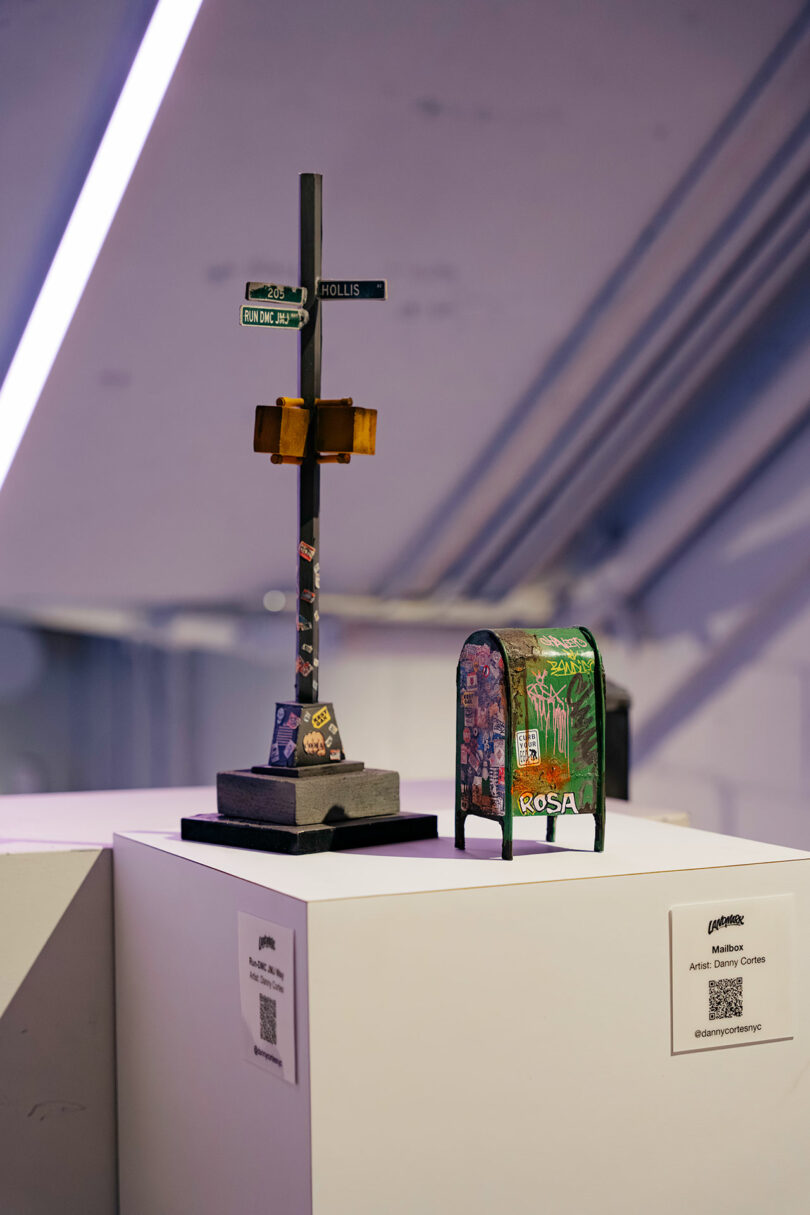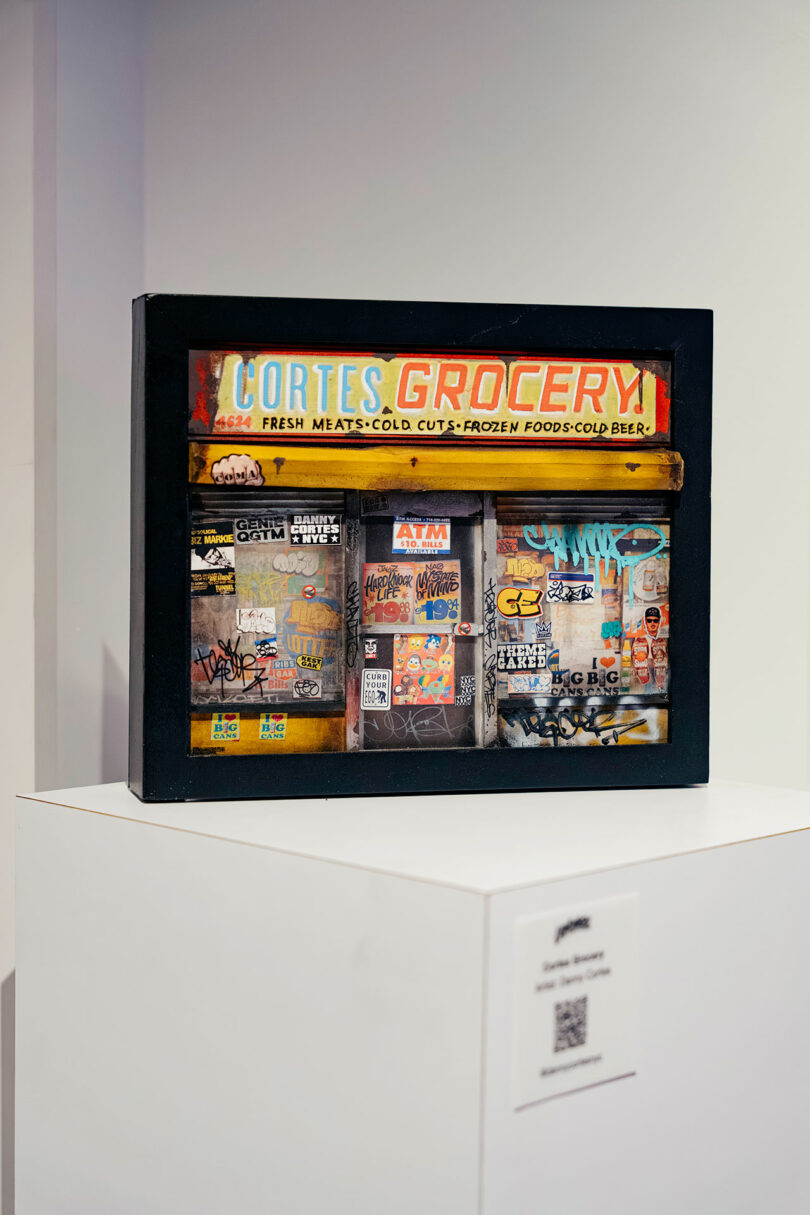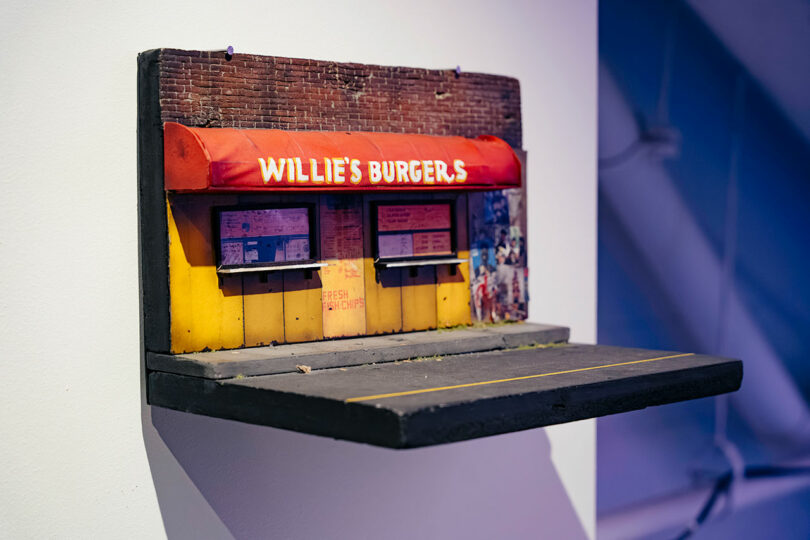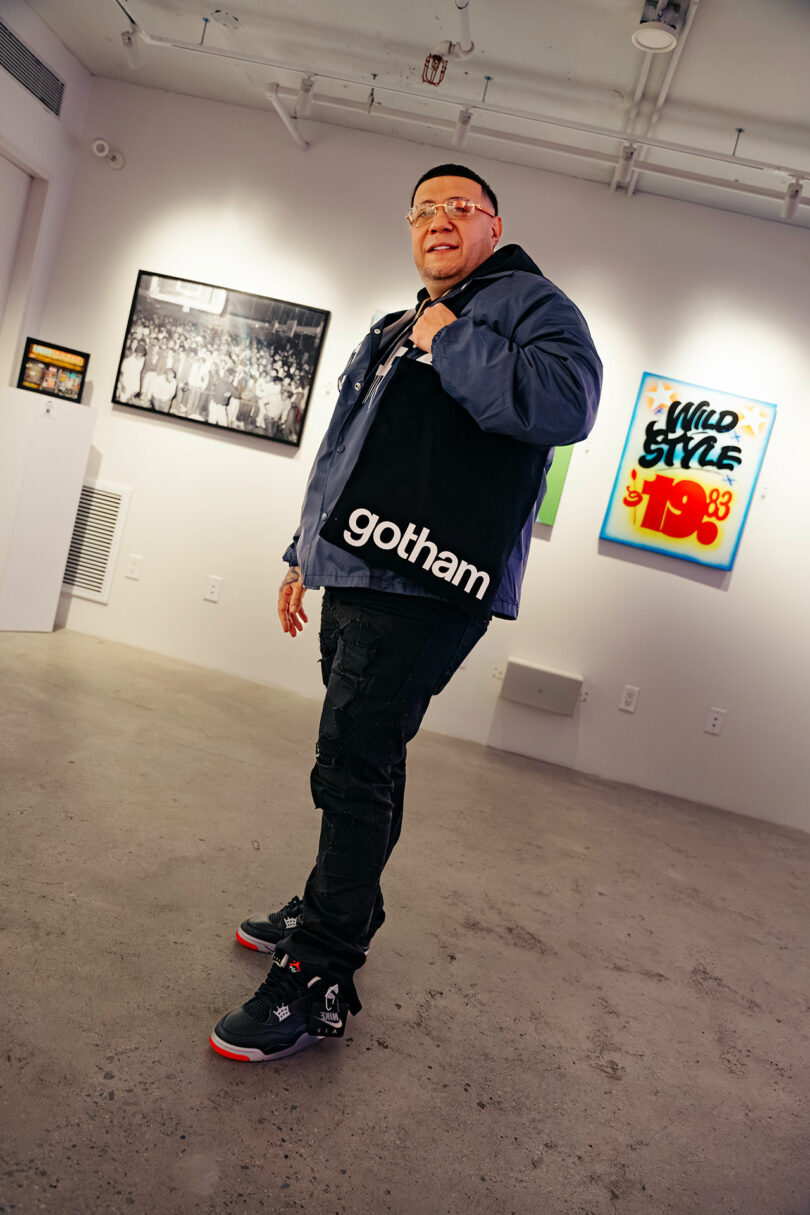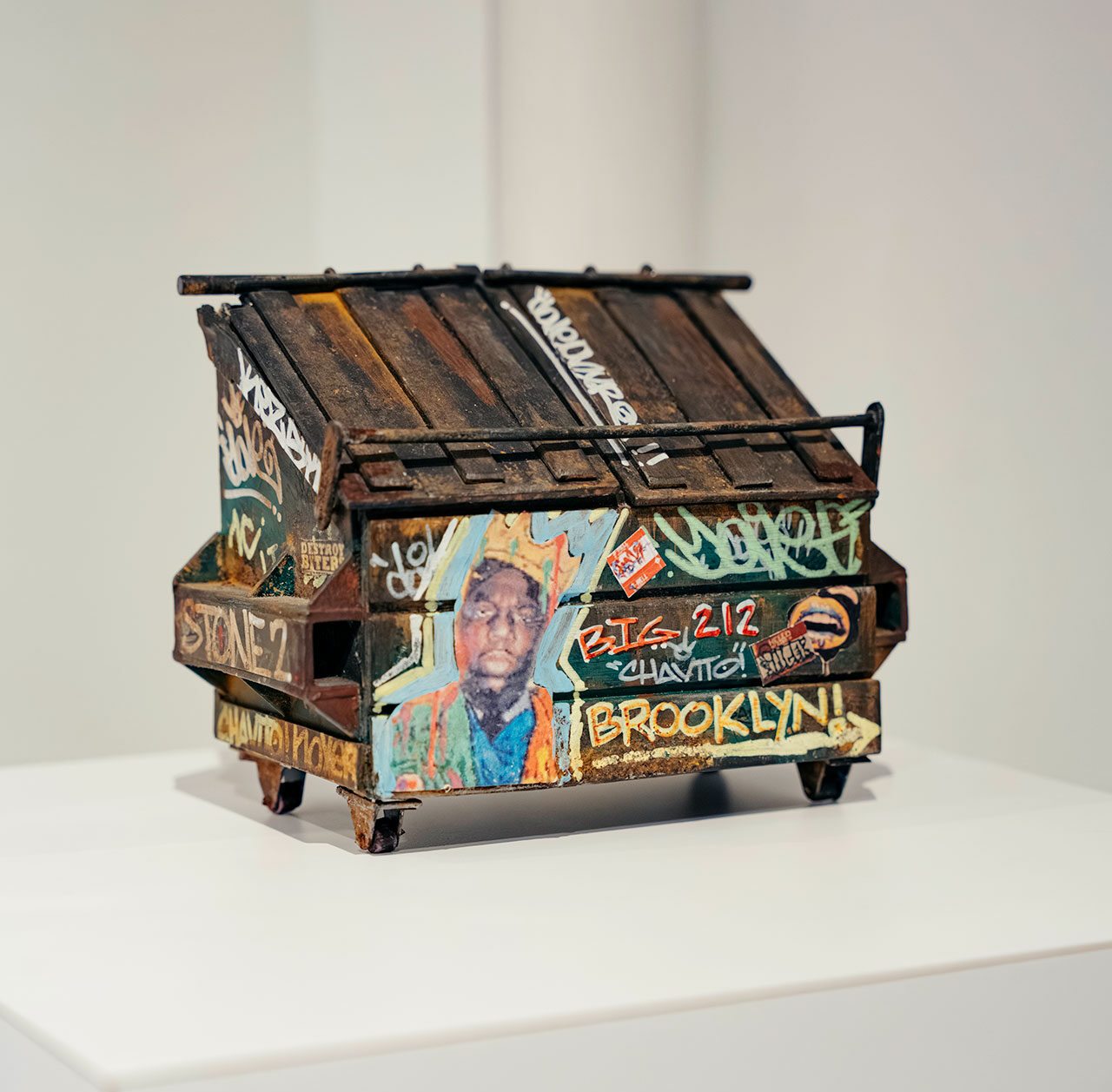
Baking bread, binge-watching television, and building makeshift home gyms. These are just some of the hobbies people turned to with their new-found abundance of time during the pandemic. But for most, little became of the activities necessitated by self-preservation or the desire for productive leisure. Maintenance man turned miniature model maker, Danny Cortes, is an exception to this. In less than three years, he has emerged as a sought-after artist, but more importantly a shepherd of New York City’s unappreciated landmarks. The self-taught artist’s decorated résumé includes the sale of his signature IceBox at Sotheby’s in 2022 for nearly $2,000, as well as custom requests by Hip-Hop stars and professional athletes for their personal collections.
Cortes’ latest foray into exhibiting works is the group show, Landmark, curated by Kate Storch, and hosted by Gotham, NYC’s premiere licensed dispensary located in the East Village. More of a cultural institution than shopping destination, the airy, two-story retail and gallery space is designed by multidisciplinary creative studio Cinema Vitae. It features fashion and lifestyle brands as well as premium cannabis programmed on the ground floor around a central tree, which is a permanent installation by local multimedia artist Molly Lowe. The mezzanine affixed above the store’s rear is where Cortes’ pieces are peppered among a lineup of other art forms in an homage to some of New York’s most iconic Hip-Hop landmarks.
Cortes’ exhibition is a tale of two cities: one of iconic vignettes reproduced to scale in an effort to preserve publicly beloved objects in this historical catalog, and the other, microcosms of Manhattan imbued with value and memory by viewers who find a personal connection with a particular piece. It’s a working database of places that have been lost and those that remain. And it’s a sign of progress for Hip-Hop with a plea to appreciate sacred spaces before they are lost to a developer’s insatiable appetite to replace cultural institutions with soulless mixed-use towers and overpriced condos.
“When the pieces are no longer at the location anymore, it’s kind of challenging because I’m going off of images when I typically visit sites to see specifics. But the people that lived in that era, they tell me what a great job I did. I knocked the details out… And when I go to an actual location with a piece, I am proud of myself for that, wow, yes, I’ve matched the color, the concrete, everything, anything.”
The prolific craftsman shares a variety of works that feature narratives from the artist’s own childhood haunts storytelling in unison with other unsung monuments from everyday New York life. Finding beauty from the banal, miniatures include: the NYC Mailbox and Dumpster; the street posts Wu-Tang Clan District and Run-DMC JMJ Way; the facades for The Apollo, Willie’s Burgers, and Disco Fever; and the conceptual exercise, Cortes Grocery.
Aside from the breathtaking detail at their tiny scale, each model is an amalgam of everyday ephemera like shoe boxes and plastic display windows from packaging, sometimes fortified with chipboard or cardstock, then finished with a proprietary blend of paint and basic baking ingredients to create organic surface treatments. Pointing to one model, he elaborates “this is a Calvin Klein shoebox that I found on Myrtle Avenue in Bed-Stuy. I saw it and I looked at it, the box was so beautiful. It was 10 times better than the chipboard that I was going to pay for, and it’s for free. I chopped it up and I made this beauty with it. So I try to use a lot of materials lying around the house.” Gesturing toward another miniature he adds, “the windows on that are plastic taken from what probably was a toy package.”
Exacted with surgical precision, he even recreates or reimagines stickers posted to storefronts and other street objects through artful reproduction in Adobe Photoshop. “I would take my daily walks just to keep myself refreshed and inspired. It lets me see who’s out there putting these stickers out and who’s active. I take tons of photos. And if I see a sticker more than five times on a daily walk… I go back to the studio, shrink them down and put them up. So I try to get as much of the real deal going on in the streets today.”
It’s as easy to get lost in reality as it is in the romanticism of Cortes’ creativity. “I do pieces that exist and no longer exist, as well as places from my imagination. Some of the graffiti tags are made-up artists that live in my world, too.” Explaining his flow: “So this artist is called ‘Tescor’ right? It’s the syllables in ‘Cortes’ backwards. This label is another artist, inspired by what they called me as a kid around my neighborhood. And I just used them as an artist in the miniature world – in my world.” Go get lost in his world.
The next leg of the Landmark exhibition will be hosted by THC NYC, on Broadway, on view until March 24th. To visit the world of Danny Cortes visit DannyCortesNYC.com.

